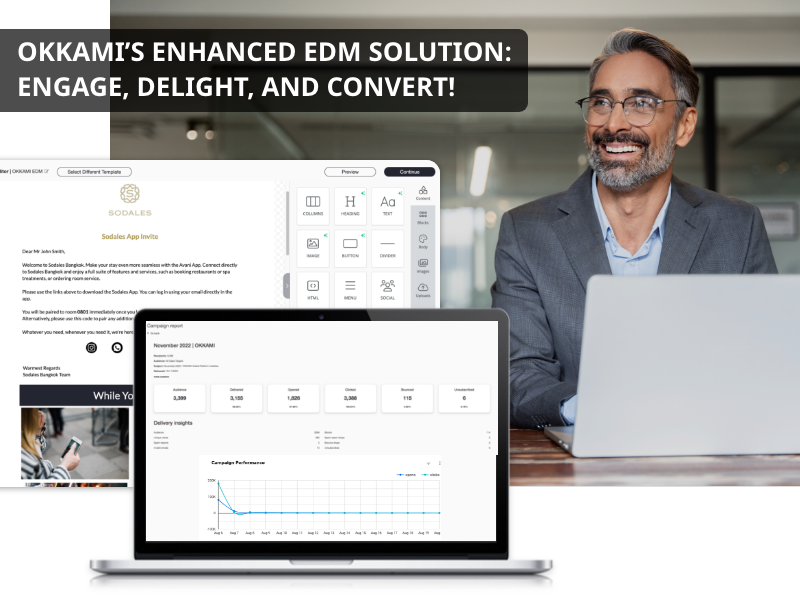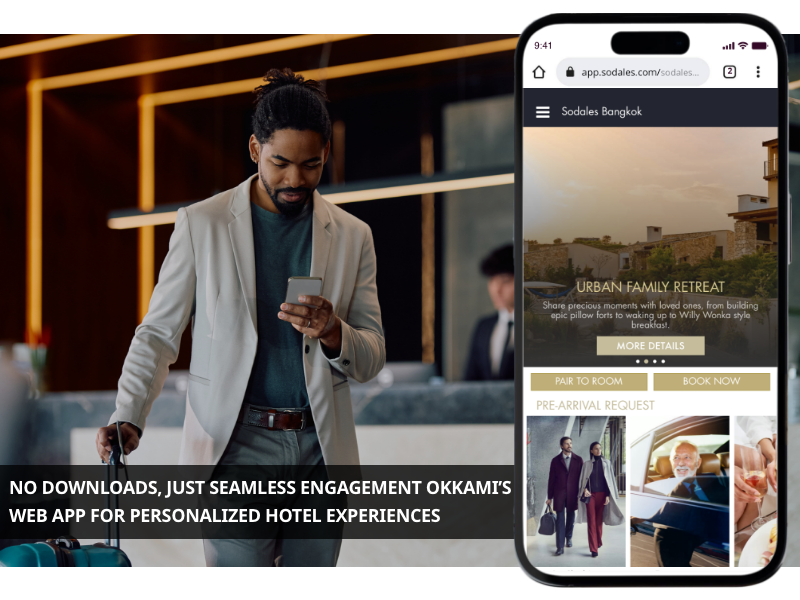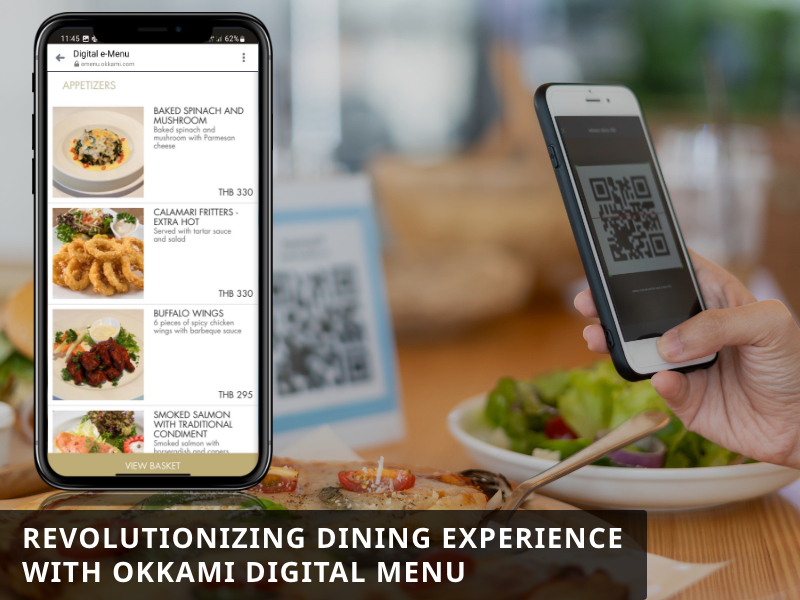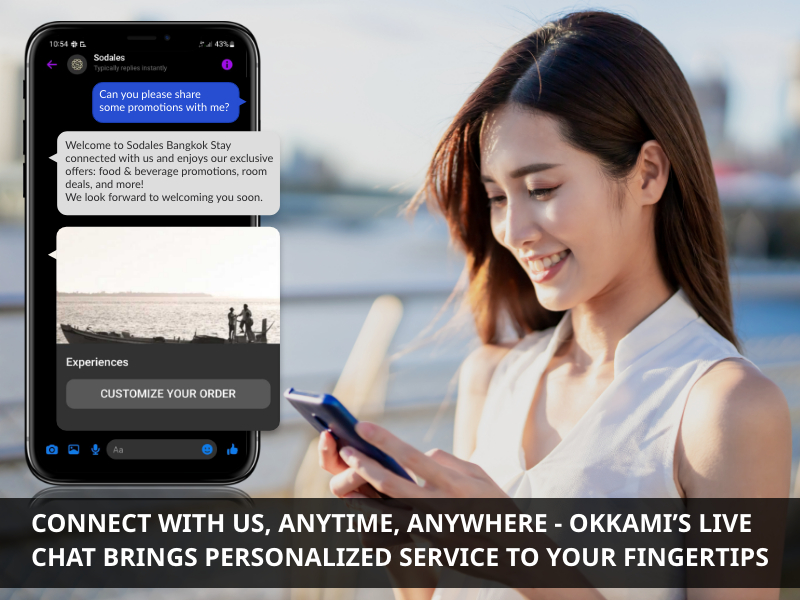We caught up with the brilliant and insightful Antony Goddard a few weeks ago and have shared our conversation below.
Antony, appreciate you joining us today. Folks often look at a successful business and imagine it was an overnight success, but from what we’ve seen this is often far from the truth. We’d love to hear your scaling up story – walk us through how you grew over time – what were some of the big things you had to do to grow and what was that scaling up journey like?
Scaling OKKAMI: The Journey from Startup to Enterprise
Scaling a SaaS company is never a linear path. It’s filled with moments of clarity, unexpected challenges, and crucial decisions that determine long-term success. At OKKAMI, our growth was driven by strategic pivots, infrastructure overhauls, and a relentless focus on automation and efficiency. Here’s a behind-the-scenes look at how we scaled OKKAMI into a leading hospitality technology platform.
Redesigning Our Software Infrastructure for Scalability
One of the earliest and most critical challenges we faced was our software infrastructure. As we acquired more clients and expanded our offerings, it became clear that our initial architecture was not built to support rapid scaling. The system struggled with increased loads, and performance bottlenecks became apparent.
The Decision: We made the bold choice to redesign our entire backend system. This was not an easy decision—it required significant time and resources, and it meant temporarily slowing down new feature development. However, we knew that without a solid foundation, scaling would only lead to more operational headaches.
Implementation:
-We partly transitoned a microservices-based architecture to ensure modular scalability.
-Adopted cloud-based infrastructure with auto-scaling capabilities.
-Implemented database optimizations and caching mechanisms to improve response times.
-Conducted stress testing to identify weaknesses before full deployment.
This overhaul paid off, allowing us to seamlessly onboard new clients without impacting system performance.
Automating Self-Onboarding to Eliminate Bottlenecks
Initially, onboarding new clients was a manual process that required significant internal resources. This limited how quickly we could scale, as our team had to dedicate time to guiding each client through the setup process.
The Decision: We needed to remove friction from onboarding and allow clients to get up and running independently.
Implementation:
-Developed a step-by-step automated onboarding process with clear instructional prompts.
-Created a wizard-driven setup that allowed clients to configure their environment without requiring OKKAMI’s direct involvement.
-Integrated automated data migration tools to streamline transitions from legacy systems.
-Introduced tutorials and real-time guidance to empower users during onboarding.
This shift significantly reduced onboarding time, enabling clients to activate their accounts within hours instead of days.
Prioritizing Scalable Products Over One-Off Developments
In our early days, we found ourselves customizing solutions for individual clients—while this generated revenue, it also created maintenance challenges and limited our ability to scale efficiently.
The Decision: Shift our focus towards building core products that serve a broad client base rather than one-off solutions.
Implementation:
-Standardized product offerings with configurable features instead of custom builds.
-Created API-based integrations to enable flexibility without excessive customization.
-Conducted market analysis to identify the most universally needed solutions in hospitality tech.
-Focused on user-friendly interfaces that reduced dependency on ongoing support.
This approach allowed us to onboard a larger number of clients while maintaining a lean development team.
Building Self-Help Portals to Reduce Support Overload
As our customer base grew, our support team was overwhelmed with recurring inquiries—many of which could have been resolved with better self-service tools.
The Decision: Develop a robust self-help system to empower clients to find solutions on their own before reaching out for support.
Implementation:
-Launched an extensive knowledge base with FAQs, troubleshooting guides, and best practices.
-Integrated AI-driven chatbots to provide instant responses to common queries.
-Created video tutorials and interactive walkthroughs for new features.
This strategy not only reduced our support costs but also enhanced customer satisfaction by providing immediate answers.
Additional Key Strategies for Scaling a SaaS Business
While the above initiatives were core to our success, other critical factors played a role in scaling OKKAMI:
-Subscription-Based Pricing Models: Ensuring predictable revenue streams with tiered pricing structures that accommodated different business sizes.
-Continuous Performance Monitoring: Utilizing analytics and system monitoring tools to proactively address potential issues before they impacted users.
-Strategic Partnerships: Expanding our reach through integrations with major industry players and leveraging their ecosystems for accelerated adoption.
-Customer Feedback Loops: Actively collecting and implementing customer feedback to refine and enhance our offerings.
-Global Expansion Planning: Adapting our infrastructure to support international markets with multilingual capabilities and localized compliance measures.
Final Thoughts
Scaling OKKAMI wasn’t just about adding more clients—it was about making our product and operations fundamentally scalable. By redesigning our infrastructure, automating processes, prioritizing broad-use products, and investing in self-service tools, we created a foundation for sustainable growth.
Every decision we made required weighing short-term trade-offs against long-term scalability. Some choices were tough, some required rebuilding from the ground up, and some involved stepping back to analyze what was truly important. But in the end, these efforts positioned OKKAMI as a leader in hospitality technology, capable of supporting clients worldwide with a scalable, efficient, and reliable platform.

Antony, love having you share your insights with us. Before we ask you more questions, maybe you can take a moment to introduce yourself to our readers who might have missed our earlier conversations?
I hold a Bachelor’s degree in Finance and have spent the past 20 years in the financial markets, specializing in building and leading global financial services firms. Throughout my career, I have founded and successfully scaled multiple companies, focusing on high-compliance environments, large-scale trading platforms, and technology-driven financial solutions.
My expertise lies in managing and operating multinational businesses with a global client base. I have led organizations that required ultra-low latency execution, high-reliability trading infrastructures, and seamless cross-border operations. Ensuring compliance across multiple jurisdictions has been a critical part of my role, given the regulatory complexity of financial markets.
Beyond technology and compliance, I have built and managed multinational offices and support teams, ensuring operational efficiency across different time zones and regulatory frameworks. My leadership experience spans strategic growth, risk management, and the development of scalable systems that support high-frequency trading and institutional-level financial services.
Today, I apply my experience in scaling businesses, driving innovation, and leading teams in high-performance environments. My ability to navigate complex financial landscapes while ensuring operational excellence has been instrumental in my success as a founder, CEO, and specialist in global business management.

How about pivoting – can you share the story of a time you’ve had to pivot?
After two decades in the financial markets, founding and running global financial services firms, I made a significant career pivot into the SaaS industry. While it may seem like a drastic shift, the transition was more strategic than unexpected. The core principles of running a successful business—scalability, operational efficiency, compliance, and technology-driven solutions—remained the same.
In finance, I managed and operated businesses which provided high-frequency trading platforms that required ultra-low latency and extreme reliability. These same demands exist in SaaS, where uptime, performance, and security are critical. Managing multinational offices and a global client base had also prepared me to lead in a dynamic, fast-scaling environment.
One of the key challenges in this transition was adapting to a different customer engagement model. Financial services are highly structured and compliance-driven, while SaaS requires a more agile, iterative approach to product development and user experience. To bridge this gap, I focused on leveraging automation, self-service capabilities, and scalable infrastructure—ensuring OKKAMI could grow efficiently without sacrificing reliability.
Ultimately, my experience in financial markets gave me the confidence and strategic mindset to scale a SaaS business. The industries may differ, but the fundamentals of leadership, execution, and building a sustainable business remain the same.

What’s a lesson you had to unlearn and what’s the backstory?
One of the biggest lessons I had to unlearn was the belief that success in business follows a structured formula—one that can be fully taught in university programs or business textbooks. While my formal education in finance provided a strong foundation, I quickly realized that running a successful business is more art than science.
Just as following a recipe doesn’t make someone a great chef, simply applying theoretical business principles doesn’t guarantee success as an entrepreneur. There’s an instinctive element to leadership—some people have an innate ability to recognize opportunities, make decisive calls under uncertainty, and navigate challenges that no degree can teach.
This realization became even more evident when I transitioned from financial markets to the SaaS industry. Despite the industry shift, the core principles of building and scaling a business remained unchanged—understanding customers, creating scalable infrastructure, and making strategic decisions. My ability to operate in high-pressure environments and anticipate market shifts was far more valuable than any predefined business model.
Ultimately, I unlearned the idea that business success is purely academic. Real-world execution, adaptability, and leadership instincts matter just as much—if not more—than what’s written in a textbook.
Contact Info:
- Website: https://www.okkami.com
- Linkedin: https://www.linkedin.com/in/antony-antony






